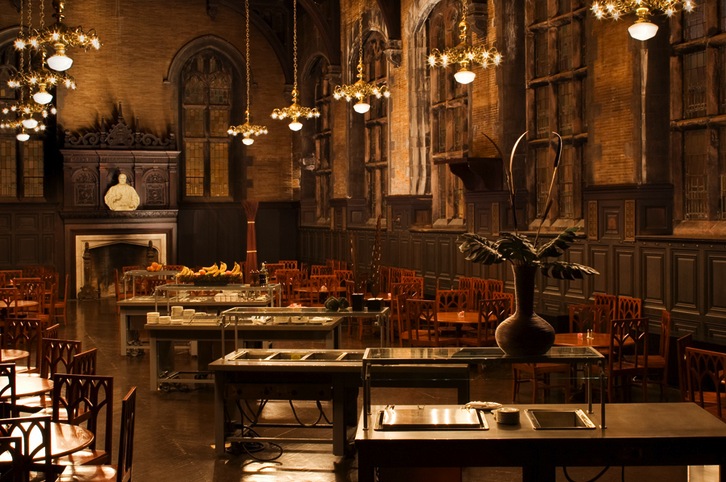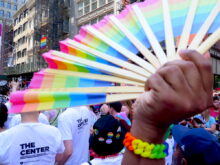Brand-new rooms—and even better—large. And best of all, carefully restored so that the spirit of the original building shines through. For example, the (non-working) fireplace in the room has the original mantel work from its days spent providing warmth for seminarians. Rooms are newly carpeted and furnished with contemporary headboards, nightstands, and desk and upholstered chair, all in dark wood. Lamps are modern as is the club chair.
Each room is unique: ours had two large windows overlooking a courtyard/playground/tennis court—as well as ten-foot high ceilings. There is a sense of spaciousness about the room and the ensuite bathroom. And given that the hotel opened in December of 2007, everything looks and feels shiny and new.
Public Spaces
Named in honor of the Archbishop Emeritus of Cape Town, South Africa (who was a visiting professor at General Theological Seminary when he was awarded the Nobel Peace Prize in 1984), the Desmond Tutu Center was once a working part of General Theological Seminary, which stills owns the property while leaving the management of the hotel/center to Aramark, a corporation known for its innovative hotels in distinctive settings. Given the Desmond Tutu Center’s connection to General, there is a strong sense of being in residence at Harry Potter’s alma mater—and particularly when wandering the grounds (the Close) or the massive oak-paneled refectory (where breakfast is customarily served).
This is one of those solid Victorian buildings with thick walls and wide halls and beautiful masonry, plaster moldings, and ornamentation. That said, the lobby is almost negligible—and off the lobby, there is a room filled with vending machines. There’s a somewhat corporate/conference center feel to the renovation of the public spaces that feels almost blandly utilitarian.
As for the courtyard and gardens (the Close) that are shared by the Desmond Tutu Center and General Theological Seminary, they comprise one of the more idyllic sanctuaries in all of Manhattan. The beautifully landscaped grounds and the original buildings of the seminary are on the National Register of Historic Places—as well they should be—and to walk the grounds on a summer morning is to feel as if you have your own key to the West Side’s counterpart to Gramercy Park.
Breakfast
A continental buffet with an abundance of fresh fruit, bagels, smoked salmon, yogurt, hard boiled eggs, cereals and pastries—all of which likely would be more enjoyable in the splendid spaces of the 35-foot high wainscoted refectory, which, alas, was closed for breakfast service for some reason (none of the personnel seemed able to give us a coherent or credible explanation). Instead, breakfast was served in a subterranean conference room complete with audio-visual projection screens and conference tables. Not to complain about a free breakfast, but the atmosphere felt similar to a chapel in an airport.
Staff
They’re personable. They smile. They’re sometimes befuddled. As the hotel has only been open six months, perhaps an attention to service will be forthcoming.
Location
Could hardly be better—provided that you are familiar with Manhattan, and specifically Chelsea. Everything’s within a ten-block radius—and a cab is but an upraised arm away.
Overview
Once inside your room at the Desmond Tutu Center, you can’t help but feel as if you are sharing in the latest chapter of Manhattan’s vibrant history—for as the renovation of the far West Side continues full steam ahead, and particularly the Chelsea environs, the Desmond Tutu Center is ideally situated to reap the benefit of such an influx of cash, visitors, and culture. And as the property and front entrance near completion, there’s every reason to believe that the Desmond Tutu Center will become a beacon of decorous hospitality on Tenth Avenue.
LINK: Desmond Tutu Center






